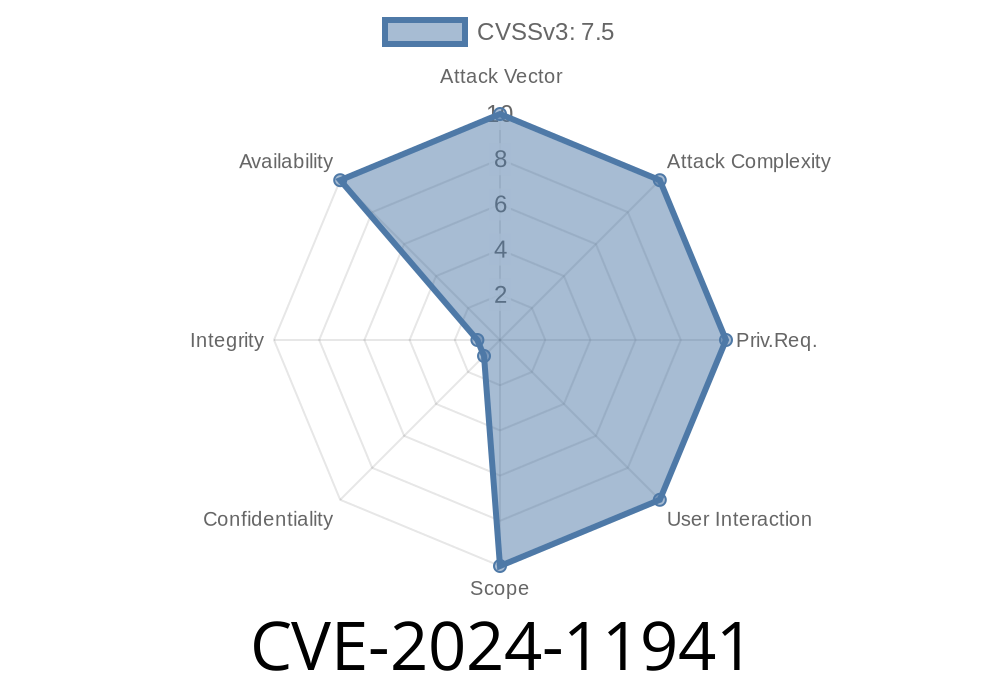Recently, a new critical vulnerability was identified in Drupal Core, a widely-used open source content management system (CMS). Designated as CVE-2024-11941, this security flaw exposes websites built on Drupal to excessive allocation attacks that can lead to denial of service (DoS) incidents. To mitigate this vulnerability, developers should immediately upgrade to the recommended Drupal Core versions as described in the official Drupal advisory [1].
In this article, we will explore the implications of the CVE-2024-11941 vulnerability, investigate the exploit details, and provide suggestions on how to better secure your Drupal site.
Affected Drupal Core Versions
* Drupal Core 10.2. to 10.2.1
* Drupal Core 10.1. to 10.1.7
The issue has been resolved in the following Drupal Core versions
* Drupal Core 10.2.2
* Drupal Core 10.1.8
Exploit Details
The excessive allocation vulnerability in Drupal Core exists due to improper handling of user-supplied data when parsing serialized strings. This allows an attacker to craft malicious serialized data that causes the application to exhaust a web server's resources by allocating unexpected amounts of memory, ultimately leading to a denial of service.
Here is a simple code snippet illustrating the excessive allocation issue
$data = 'a:100000000:{i:;i:;}';
$parsedData = unserialize($data);
In this example, the variable $data contains a serialized PHP object that represents an array with 1 billion elements. But, when the unserialize() function is called, the webserver is not able to allocate the required memory leading to resource exhaustion and a crash.
This exploit can be achieved by various manipulations of serialized data, or by sending a large payload in a POST request to a vulnerable web page. Attackers can craft different requests and use various techniques to remotely leverage this vulnerability and disrupt the targeted website.
Mitigations & Best Practices
To remediate this vulnerability, site administrators must immediately upgrade their Drupal Core to the following secure versions:
* Drupal Core 10.2.2 (For those using 10.2.x)
* Drupal Core 10.1.8 (For those using 10.1.x)
Upgrading Drupal Core is a critical action that provides the latest security patches and prevents exploitation. The Drupal project highly recommends these security upgrades and provides an upgrade guide [2] to help users with the process.
In addition to upgrading, site administrators should apply the following best practices to secure their Drupal installations:
Regularly monitor the Drupal website and keep informed of security advisories and updates.
2. Implement least-privilege access control policies, ensuring that users are granted the minimum necessary privileges for their roles.
3. Perform regular security audits and assessments of the overall infrastructure to identify potential vulnerabilities and take necessary actions to remediate them.
4. Employ strong password policies, multi-factor authentication (MFA), and secure user registration and login processes.
5. Keep backup copies of your Drupal site and monitor file integrity to ensure a quick and secure recovery from security breaches.
Conclusion
CVE-2024-11941 highlights the importance of diligently monitoring, maintaining, and securing your Drupal website. By upgrading to the recommended Drupal Core versions and following the best practices mentioned above, site administrators can significantly reduce the risk of exploits and protect their sites from harm.
Original References
[1] Drupal Advisory: https://www.drupal.org/sa-core-2024-092
[2] Drupal Upgrade Guide: https://www.drupal.org/docs/upgrading-drupal/upgrading-from-drupal-9-to-drupal-10
Stay informed and secure your Drupal sites against the latest vulnerabilities and threats. Always remember, prevention is better than cure.
Timeline
Published on: 12/05/2024 15:15:08 UTC
Last modified on: 12/05/2024 16:15:23 UTC
